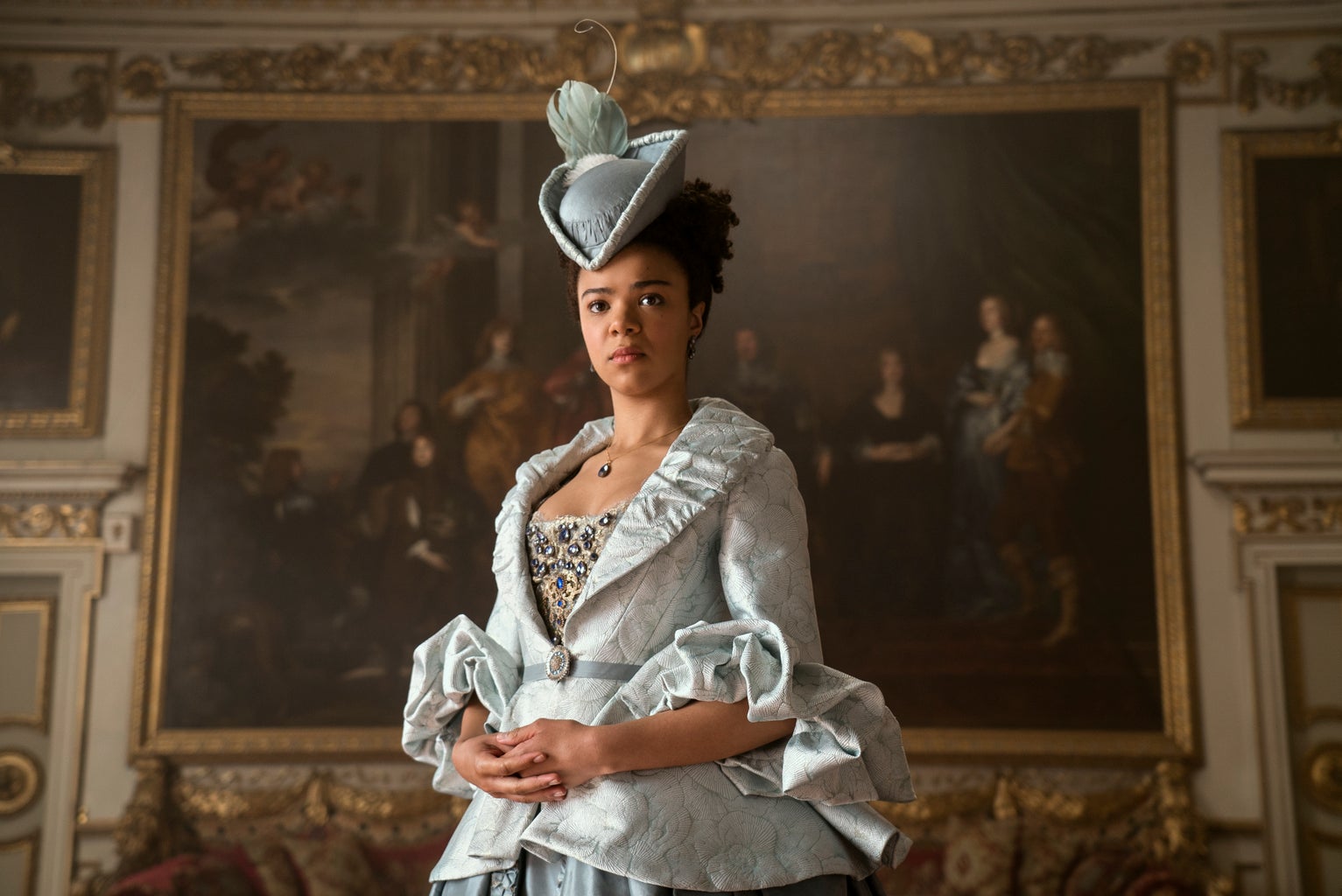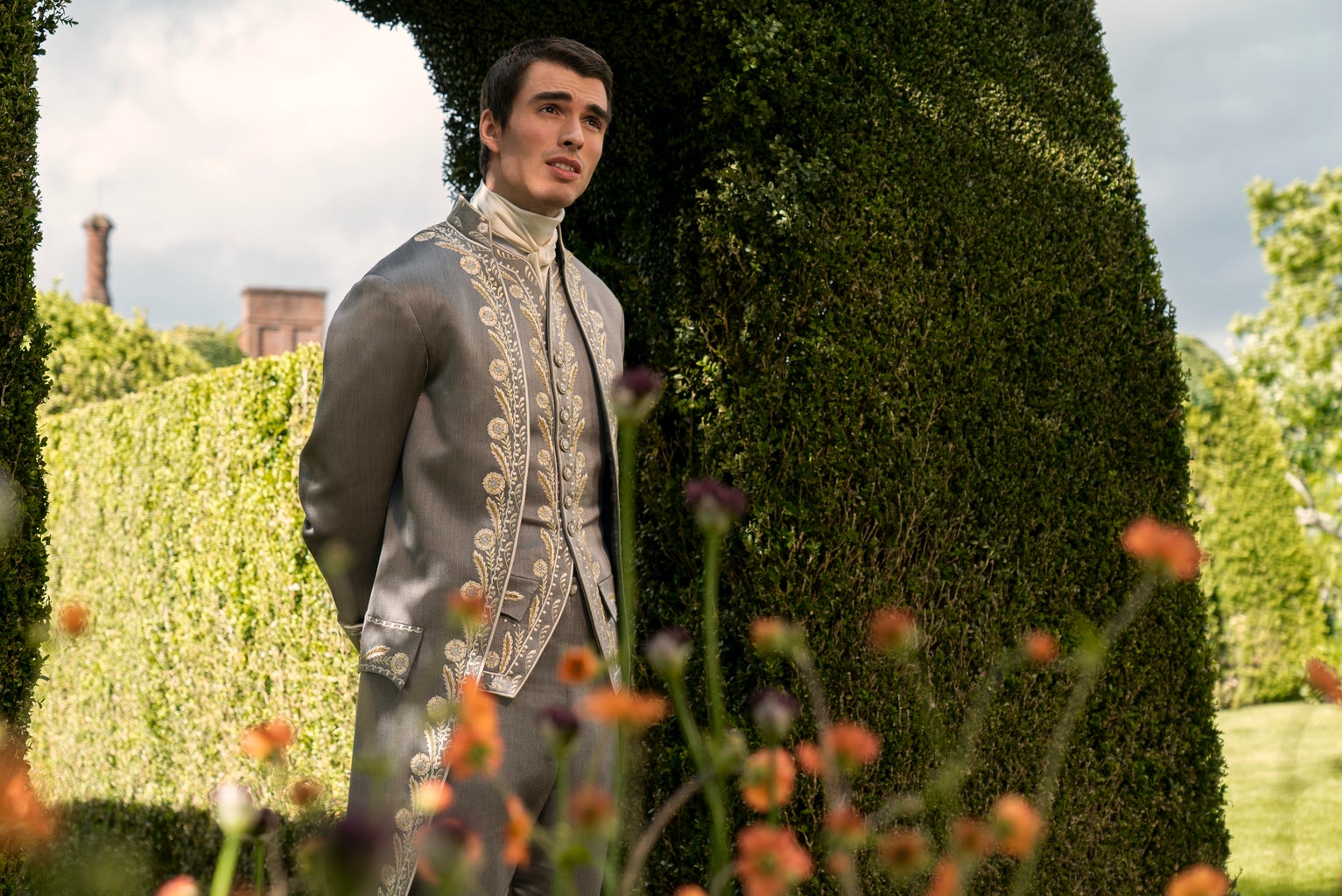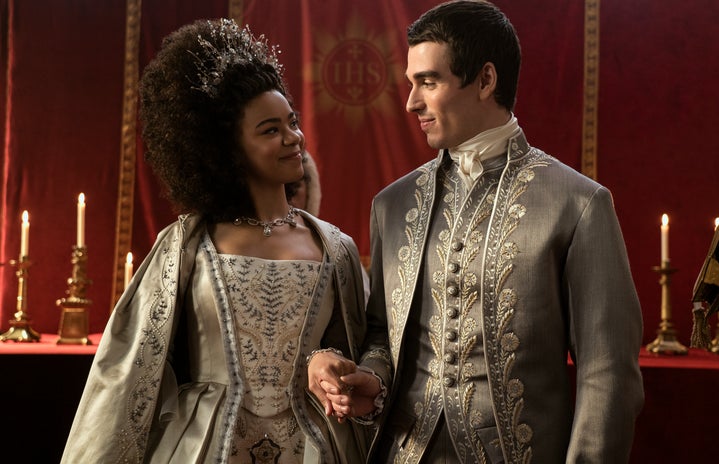Bridgerton fans, assemble: We have a spinoff to celebrate! Netflix’s Queen Charlotte premiered on May 4, and like the title suggests, the six-part miniseries is all about Queen Charlotte, the reigning monarch in the time that Bridgerton is set. Rather than catching up with the Bridgerton siblings, the series flips back and forth between the beginning of Charlotte’s marriage to King George of England and the present timeline of Bridgerton. But while you might enjoy watching Golda Rosheuvel and India Amarteifio take on the queen’s big personality, you might have a question in the back of your mind: Is Queen Charlotte based on a true story? Warning: Spoilers for Queen Charlotte follow.
More of the story than you might think has roots in reality. If you Google the full name Queen Charlotte is given in the show, you will find the Wikipedia page of a real queen named Sophia Charlotte of Mecklenburg-Strelitz, who lived around the same period as the fictional Queen Charlotte (1744 to 1818). She was really married to King George III, too, and just like in the show, their first son was named George IV. Even the detail about Charlotte and George having 15 (yes, 15!) children is based in reality, according to the Royal Family’s official website.
There are even debates about the real Charlotte’s ancestry, with some historians believing she was Britain’s first Black monarch. Considering Bridgerton has made headlines (and gotten some flack) for its diverse casting that has been called historically inaccurate, it’s interesting that there may be some truth to the casting of Black actresses like Rosheuvel and Amarteifio in the role of Charlotte. Race was conceptualized very differently back than it is today, though, so Queen Charlotte still shows a pretty 21st-Century portrayal of racial dynamics among the characters that’s consistent with the other Bridgerton seasons.

George also has elements of reality in his characterization. According to his own Royal Family website page, he was “the most attractive of the Hanoverian monarchs” and “a good family man” who was “devoted to his wife.” In fact, many believe that Charlotte and George were really in love, even though the marriage was arranged — he never had a mistress, and they seemed to be devoted to each other for their entire marriage. The details in the show about him liking science and astronomy enough to have his own observatory, plus calling himself “Farmer George” because of his interest in agriculture, were also real.
You’re probably mostly wondering if George’s illness has a basis in reality. It’s true that he was eventually considered “mentally unfit” to rule, according to the Royal Family. Historians and physicians dispute the actual nature of his condition, with possibilities ranging from porphyria to bipolar disorder. With the limitations of 18th Century medicine, we’ll probably never know exactly what illness he had. It’s true that Charlotte was kept unaware when he first started experiencing episodic symptoms, but his first bout was in 1765 (after they’d been married for years already), which doesn’t quite match up with the show’s timeline.
BTW, George III? Same guy that you probably learned about in history class as the king in power during the American Revolution. George and Charlotte married in 1761, over a decade before the events of the Revolutionary War, but as endearing as Queen Charlotte makes him seem, I couldn’t not think about that once I realized. Just saying!

The flash-forward timeline is also based on true events. In the show, the only legitimate heir to the throne dies, setting off a succession crisis that leads Charlotte to pressure her many, many children to produce at least one legitimate heir to the throne to secure the family’s line in the British monarchy. Chaos ensues, with her son Prince Edward and his wife eventually telling Charlotte they are going to have a baby, which they think will be a girl.
In reality, the 1817 death of Princess Charlotte of Wales did create a succession crisis. (Though, there was quite a bit less judgment from Lady Whistledown, since she of course was not real.) Edward saved the day by fathering a baby girl — and that girl grew up to become Queen Victoria. Yeah, the Queen Victoria. Now you know why in the show, Charlotte mentioned the need for a strong queen in England. They sure got one!
With all this in mind, though, I wouldn’t go too far in saying that Queen Charlotte is totally true. There was no Lady Danbury or Violet Bridgerton in real life, for example, and the details about Charlotte’s right-hand man, Brimsley, and his relationship with the kingsman Reynolds are also fictional. It’s also not likely that Charlotte tried to climb the garden wall to escape her wedding, and most of their personalities are inventions of the writers. Still, these details and plot points make for an interesting history lesson if you look further than what the show’s script tells you. Sometimes, truth is just as strange as fiction — if not stranger, after all.


